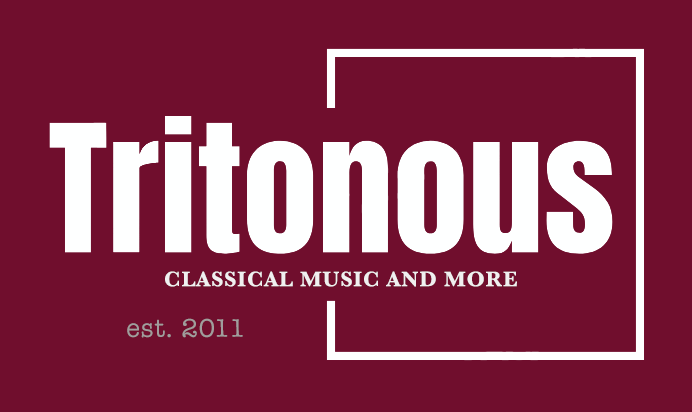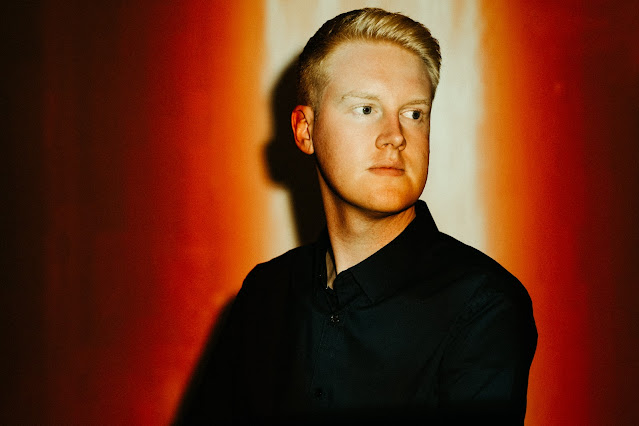 |
| Jay Capperauld (Photo: Euan Robertson) |
The Scottish composer Jay Capperauld is currently the Scottish Chamber Orchestra‘s (SCO) Associate Composer and this month he has two sets of performances of his works. On 19 February SCO premieres Jay’s new piece, Bruckner’s Skull in Dumfries with performances in Edinburgh and Glasgow. Written as a death-mask homage to composer Anton Bruckner in the 200th Anniversary year of his birth, Bruckner’s Skull is inspired by Bruckner’s obsession with death, and in particular the two alleged occasions when Bruckner cradled the skulls of both Beethoven and Schubert when their bodies were exhumed and moved to Vienna’s Central Cemetery in 1888.
Before then, SCO revives Jay’s work for children, The Great Grumpy Gaboon, and later in the season, they will premiere Jay’s Carmina Gadelica for wind dectet, inspired by the Gaelic incantations, hymns, and songs collected by Alexander Carmichael in his work of the same name.
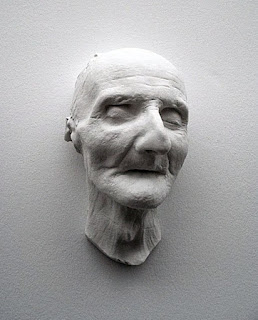 |
| Bruckner’s Totenmaske (Death Mask), 1896 |
Jay admits that he is rather drawn to strange stories and is interested in story-telling in music, the challenge of how to create a musical narrative with a story in wordless form. Bruckner’s Skull is inspired by the great composer’s deathly fixations. Some of the stories are anecdotal, but Bruckner did spend time in a sanatorium for what we would now call OCD. The symptoms of OCD manifest in a way in which a person experiences uncontrollable, intrusive, distressing and recurring thoughts (obsessions) which are alleviated by engaging in repetitive behaviours and actions (compulsions) that are attributed to a specific fear of dire consequences (to themselves, loved ones or others) if those behaviours and actions are not completed to a perceived satisfactory degree.
Bruckner’s reported fixations included giving specific instructions on his own burial under the organ that he played at St Florian Monastery and the keeping of lists of his female students to whom he would continually propose well into his old age. The duality in his hyper-religious grandiose sense of divine musical purpose coupled with his extreme shyness and debilitating low self-esteem. Jay is interested in these fixations, not only how to convey the story in music but also what does it say about Bruckner himself. Who was the man and how do we deal nowadays with the more problematic elements of his fixations?
Jay intends his piece to humanise Bruckner and get to the crux of the man from a more empathetic perspective. Musically, Jay is interested not so much in what is happening but in why, for instance, the oboe interacts in the way it does. For Bruckner’s Skull, Jay uses snippets of Bruckner’s music which he treats in a hyper-fixated way, making the music feel as if we are hearing it through Bruckner’s obsessive qualities. Through the compositional process, Jay tries to reflect Bruckner’s mind.
But there are other composers there too, Beethoven and Schubert, but also the number 14 reoccurs, a reflection of Bruckner’s numeromania, his obsession with counting. So, Jay includes excerpts from Schubert’s String Quartet No. 14 ‘Death and the Maiden’, and Beethoven’s Piano Sonata No. 14 ‘Moonlight’, symbolising the status of the composer in Bruckner’s mind. And there is a more overt quotation from Beethoven’s String Quartet No. 14, a work that Schubert requested to listen to on his deathbed, thus signifying the coming together of all three composers. But these quotations are treated in Bruckner’s hyper-romantic and fixated manner.
Jay’s interest in storytelling means that his music is varied and a commissioner does not necessarily know what they will get from the resulting piece. For Jay, subject matter determines the sounds, and his music can be accessible and optimistic, or fixated on death. So his 2021 work, Death in a Nutshell is inspired by Frances Glessner Lee’s artwork Nutshell Studies of Unexplained Death, miniature recreations in the form of a doll’s house of twenty real-life scenes of unexplained death, to which Jay has added music with a Bernard Hermann-esque Hitchcock feel. Yet, despite this fascination for death, in conversation, Jay proves to be lively and engaging company.
Storytelling is so important to Jay because it tells him what the music needs to be. But it also keeps up his own interest, and he suggests that one sound-world might get tedious, so he keeps things varied. He also likes the music to speak for itself, almost as if it is a sentient being, the music tells you what it needs to be and you almost remove yourself as a composer. So for Bruckner’s Skull, whilst the piece has a dark, morbid edge, there is also a more classical feel to the sound-world thanks to the influence of Bruckner, Beethoven and Schubert.
Coming up in April and May are the premiere performances of Jay’s Carmina Gadelica for a ten-piece wind ensemble. Carmina Gadelica is the name given to a collection of ancient Scottish folk poetry consisting of hymns, prayers, charms and incantations from the vanishing Western Isle cultures of Scotland, collected by Alexander Carmichael in the 1800s. However, there were allegations that Carmichael altered the poems to fit the publisher’s intentions, to create a world more aligned with the romanticism of Sir Walter Scott. This calls into question the authenticity of the published work and Jay wonders what has remained of the true texts. His music for Carmina Gadelica reflects the original pieces with walking songs, lamentations and so on, yet whilst the music is made to sound Scottish, Jay leaves it open as to how authentic the music is. In a sense, Jay’s Carmina Gadelica is authentic, after all, Jay is Scottish (he was born in Ayrshire), but musically this is Scotland via influences such as Ravel.
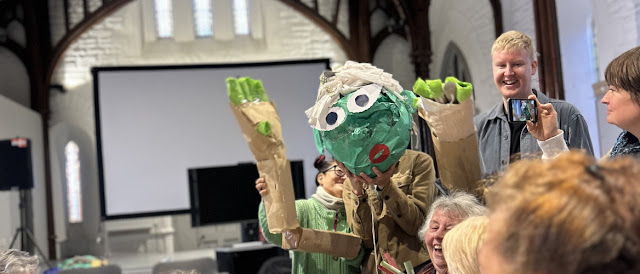 |
| SCO at Craigmillar – Seen and Heard with Jay Capperauld |
Jay has been SCO’s Associate Composer since 2022, but it took a while to come to fruition so his first major works were performed in the 2023/24 season which coincided with the 50th anniversary of the orchestra. His first piece for them, The Origin of Colour was premiered at the opening concert of the orchestra’s 2023/24 season. Yet he has known the orchestra for a far longer time than this. The first piece he wrote in high school (the Cumnock Academy) was written as a result of three players from the SCO coming to do a workshop at the school when he was 15 or 16 (and in fact, two of those three players are still in the orchestra). This was his first attempt at composition and the high school students who took part in the workshop had their pieces played and recorded by the SCO players. Now 15 or 16 years later he has the wonderful privilege to be working as the SCO’s Associate Composer and taking part in the 50th anniversary celebrations.
But he does not just write music for the orchestra, he is embedded in all aspects of orchestral life and during our conversation it becomes apparent that Jay is as engaged with these other aspects whether it be community work, schools or writing for children as with the more formal compositions. The role of Associate Composer is trying to break away from the idea of a composer as an isolated being who just appears at rehearsals. As well as the commissioning of new works, Jay is involved in the creative learning side of the orchestra, taking part in projects in the day-to-day life of the musicians. As part of the SCO’s residency in Craigmillar (Edinburgh), Jay runs Seen and Heard, a cross-arts project where community members create art works and respond musically to them, and vice versa. Participants do not have to be musical, and the project is given with SCO musicians.
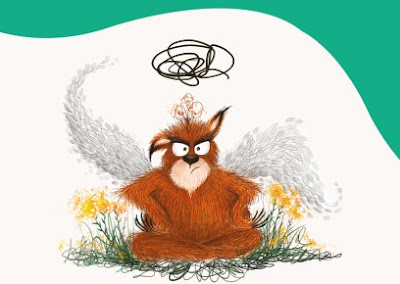 |
| Jay Capperauld & Corrina Campbell – The Great Grumpy Gaboon |
Another aspect of this is The Great Grumpy Gaboon, commissioned as part of SCO’s Families Concerts in the 2023/24 Season in collaboration with children’s author Corrina Campbell. The work puts the SCO at the centre of a work about friendship and forgiveness. Jay describes it as a lovely, sweet story, yet at 40 minutes long, it is potentially a big ask for children, yet the response of the kids was exceptional and Jay still has parents talking to him about their kids hearing the work last year. The SCO’s 2025 performances include one for schools and relaxed performances for children aged four to eight in Aberdeen and Inverness.
Jay has also been involved in the SCO’s Soundbox, an artist development programme offering a platform for music creators from any musical or cultural background. The music creators are not necessarily classical and so the programme challenges them to come into the SCO sound world. This means that creatives from folk, jazz/pop/rock or electronic backgrounds are writing musical notation for the first time. Jay has found it amazing how the participants react, and sometimes when their piece is premiered it is the first time they have heard their music performed by live musicians. He has been mentoring the scheme alongside older mentors.
These sorts of projects are all part of the SCO’s remit, challenging their players’ practice too. The intention is for every day to be a school day so that the players are learning whether it is in orchestral rehearsals, working with composers or working with outside music creatives. Jay describes them as an orchestra on the move and he loves that the process as a composer can be anything. For Jay, music is music, and he is keen to be involved in so many different aspects, community, education and concerts. All are one and the same, taking music seriously.
Jay quotes Sir Peter Maxwell Davies who evidently said that whoever he is writing for he always wrote up, and this motto has kept Jay in good stead.
Jay trained as a saxophone player at the Royal Conservatoire of Scotland and dabbled in composition. Composing was more of a passion project, he had a fascination with composers but was not intended to be a composer himself. He was 15 or 16 before he decided to study saxophone and at the time thought all composers were dead. That was until he came across James MacMillan, who also happens to be from Cumnock. It was the head of composition at the Royal Conservatoire of Scotland who suggested that Jay should study composition more formally and he ended up doing a Masters in composition. He admits that he does not play the saxophone very much any more. He is having such a blast doing composition and is grateful that he is able to forge a career with opportunities to be creative.
His inspirations are many and varied, tending towards individual pieces rather than a single composer’s oeuvre. He mentions Stravinsky’s The Rite of Spring which has been with him the longest as he saw Disney’s Fantasia when he was around four and thanks to an obsession with dinosaurs the music stayed with him. However, he grew up listening to Heavy Metal, with Black Sabbath being a big influence. Yet, the music of Ravel was an influence too. He mentions Harrison Birtwistle’s comment that influence was like a smell that creeps under the door, it is not always fully intentional. His music for Bruckner’s Skull is different because it is explicitly driven by the music of the three composers, Bruckner, Beethoven and Schubert, but generally, his inspiration comes from all sorts of things, stories, artworks, films and other external influences. He can come across something and there is a spark, he thinks there is a piece in that.
He is currently working on an accordion concerto for Ryan Corbett commissioned by the National Youth Orchestra of Scotland. This work is inspired by the early electric experiments by Luigi Galvani (1737-1798) in reanimating frogs’ legs. Called Galvanic Dances, it is a series of dances arising from Jay’s bizarre vision of a Can-can of dancing frog legs. The work will be premiered on 1 August 2025 at Perth Concert Hall, conducted by Catherine Larsen-Maguire. The orchestra will also be travelling to present the programme in Berlin for the Young Euro Classic. Jay comments that it is phenomenal to be working with Ryan Corbett. This is not Jay’s first work with NYOS and his piano concerto Endlings was premiered by pianist James Willshire and the NYOS, conducted by Rebecca Miller, in 2018. He finds the young musicians of the orchestra so open and enthusiastic about new music, after all for them all repertoire is new. Jay describes working with them as galvanising, and he is looking forward to the Summer concerts.
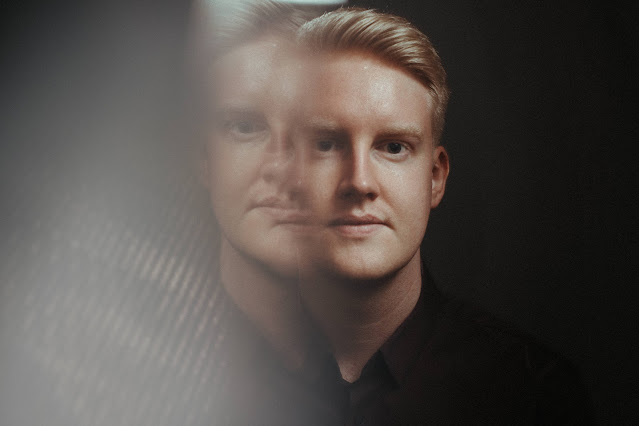 |
| Jay Capperauld (Photo: Euan Robertson) |
He has more SCO commissions in the pipeline, but he is also working on The Origin of Colour again, explaining his pieces to high school students with the whole orchestra there to play his music as part of SCO Immerse. The piece takes its inspiration from a short story in Italo Calvino’s Cosmicomics series called Without Colours, which tells a surrealist tale of the creation of colour on Earth. As part of SCO’s Immerse programme, the piece uses synaesthesia as a way into the programme, and there will be a painter creating images based on The Origin of Colour, the intention is to create an open creative conversation between music and art. Composition has only just returned to the Scottish school curriculum and Jay is keen to get high school students interested.
Scottish Chamber Orchestra
National Youth Orchestra of Scotland, Ryan Corbett, Catherine Larsen-Maguire
The blog is free, but I’d be delighted if you were to show your appreciation by buying me a coffee.
Elsewhere on this blog
- Letter from Florida: a study in contrasts, Gounod’s Roméo et Juliette at Palm Beach Opera – opera review
- 1775 – A Retrospective: Ian Page & The Mozartists on terrific form in a deep dive into the sound-world of Mozart’s 1775 – concert review
- Canadian composer Jacques Hétu’s final symphony in a new recording with three of Canada’s major ensembles – record review
- Personal night time musings & reflections: Eight Nocturnes from violist & composer Katherine Potter commissioned by ABC Classic – cd review
- Reynaldo Hahn looks back: Belle Époque in Kaleidoscope Chamber Collective’s programme centred on Hahn’s Piano Quintet – concert review
- Anna Dennis’ Susanna was rightly the main focus of John Butt & Dunedin Consort’s involving account of Handel’s neglected oratorio – concert review
- Figures outside a Dacha, with Snowfall, and an Abbey in the Background: from Andrei Tarkovsky’s Nostalghia to Steven Daverson’s new work for orchestra and live electronics – interview
- Beyond Ravel: Mathias Halvorsen comprehensively demonstrates it is well worth exploring Paul Wittgenstein’s commissions – record review
- Johann Christoph Friedrich Bach is undeservedly squashed between his brothers, but this disc shows his music well worth exploring – record review
- ‘They are all gone now, and there isn’t anything more the sea can do to me’: Riders to the Sea – interview
- Home
